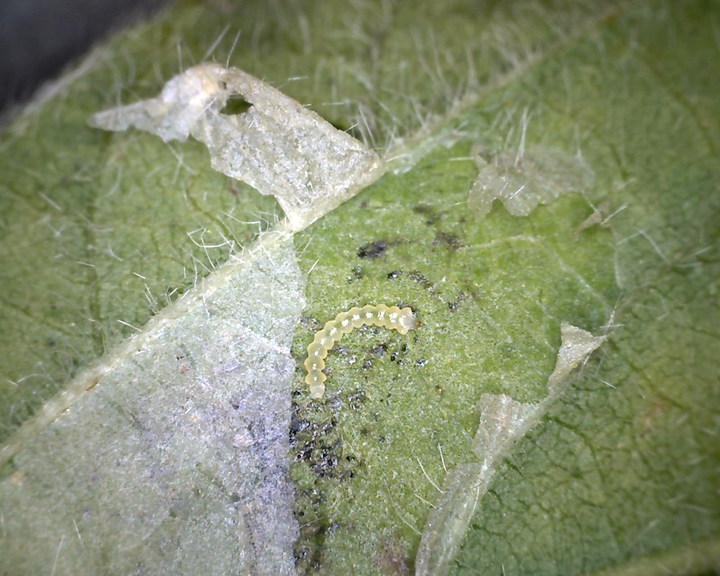Even though soybean fields are drying down and nearing harvest, the first case of a soybean field infested with soybean tentiform leafminer (STL) (Macrosaccus morrisella) in Nebraska was confirmed on Sept. 27, 2024. This is a native leaf miner that was known from two native plants: American hog peanut and slickseed fuzzybean. In recent years, STL has been observed infesting soybean.
The first reports of STL in U.S. soybean fields came from two counties near the Twin Cities Metro Area in Minnesota in 2021. During 2022, an additional 10 counties in Minnesota and three counties in South Dakota reported infested fields. North Dakota was added to the list of states with five counties reporting infestations in 2023. So far, Nebraska is the only state to be added this year. A single infested field has been found in Madison County.



The adult STL is a very small moth (~1/8 inch). Wings are marked with orange, white and gray-black markings (Figure 1). Eggs are laid on the underside of leaves. Larvae hatch and burrow into the leaf, where they feed on leaf tissue. Feeding at first forms a serpentine-like mine. The mines later grow into patches or blotches (Figure 2). Multiple mines can be on the same leaflet. Mines don’t cross the midrib or major leaf veins. Larvae are pale green to white (Figure 3 and 4). Multiple larvae can be in the same mine. Larvae will spin a silk retreat in the mine to pupate.
At present, there are no known management methods for this insect. As fields in Nebraska are rapidly approaching harvest, there is little to be concerned with at this time. The next step will be to conduct growing season surveys of soybean fields to determine the prevalence of STL in Nebraska soybean fields.
Further information from the University of Minnesota Extension can be found here.

